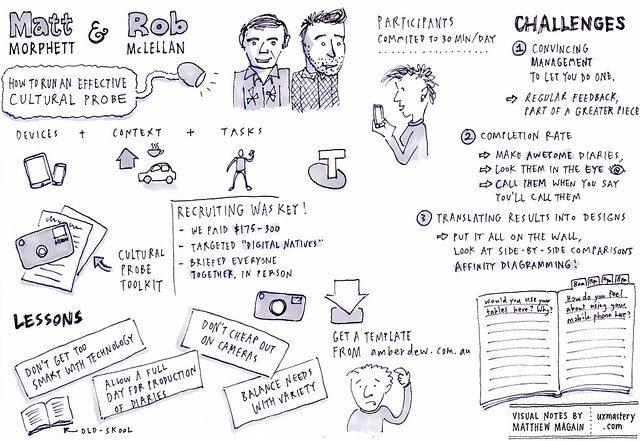How to run an effective Cultural Probe on your UX project
…getting 100% participant compliance and delivering meaningful results.
On a recent project at Telstra, Rob and I undertook a cultural probe as part of our research activities. It wasn’t one of those open ended cultural probes, it had a very specific purpose and needed to compliment other more traditional research activities – mainly contextual enquiry and surveys.
It turned out to be very successful in that every participant turned in a completed diary and camera full of photographs but most importantly, because of the way we structured the participant activities, we were able to take the data collected and formulate very meaningful results that drove our design decisions.
We’d like to talk specifically about how we achieved this success and set out some recommendations for others looking to run their own cultural probe or diary study.
First up we’ll cover what usually goes wrong with cultural probes…
- You can’t convince management to let you do one.
- Participants don’t complete the materials.
- What you get back is too broad and hard to form directly into meaningful recommendations.
We found ways to overcome all these issues and we’ll share our practical experience with attendees expanding on these points and more with examples and photographs of our materials.
We made a few mistakes along the way. For example, we cheaped out on disposable cameras and paid the price with poor quality participant photos.
Probes are obviously a bit of a niche as research methods go but we think they could play a larger role and we hope that the approaches that we put forward might inspire those who wouldn’t otherwise consider them to give it a go. With a little planning they can be easy to run and yield very good results.
You’ll leave the session with the following:
- An understanding of the steps involved in running a cultural probe within your client organisation.
- Methods for selling this research approach to management.
- Specific strategies to ensure your participants deliver you great research points that will drive your design activities.





